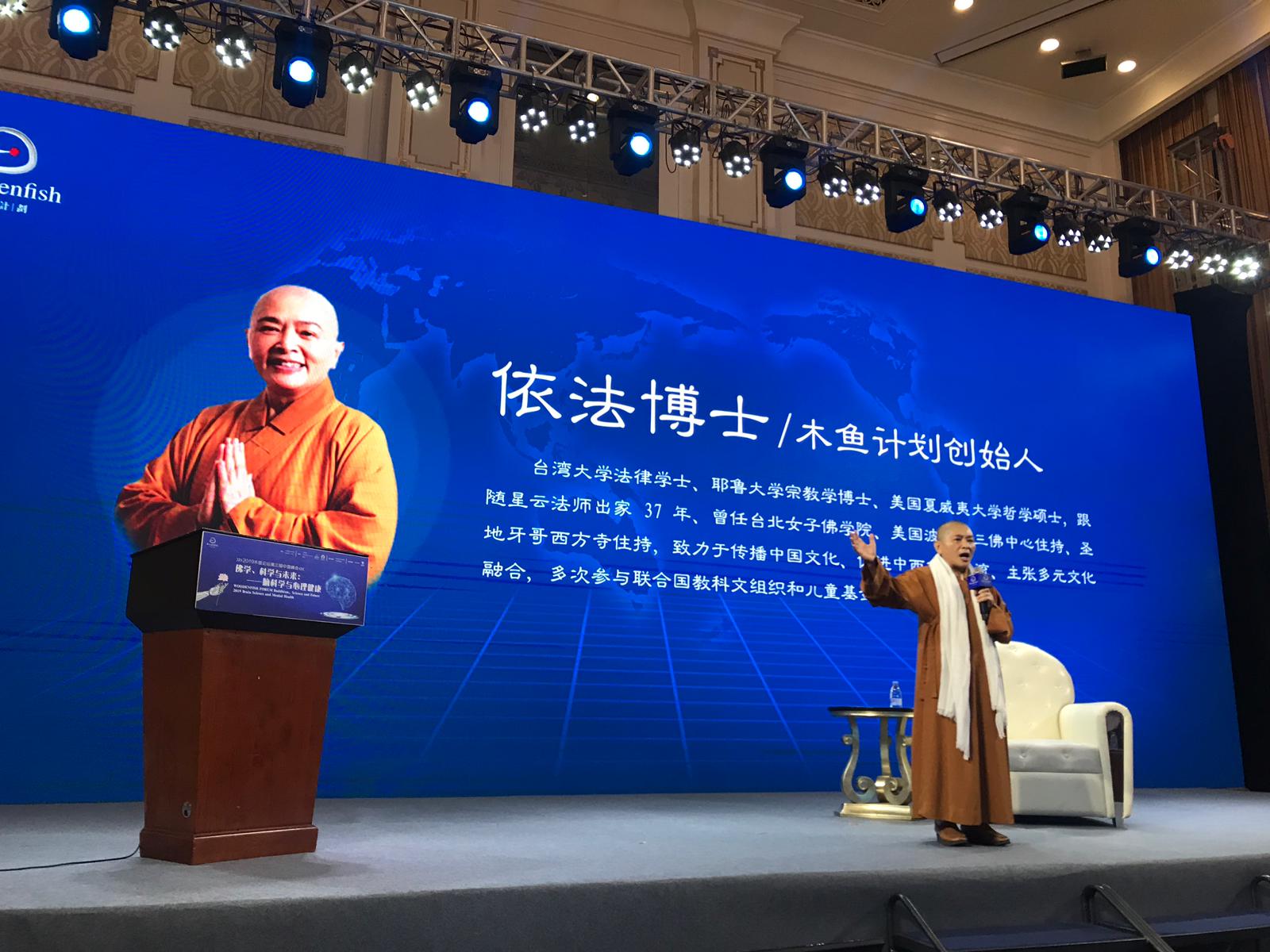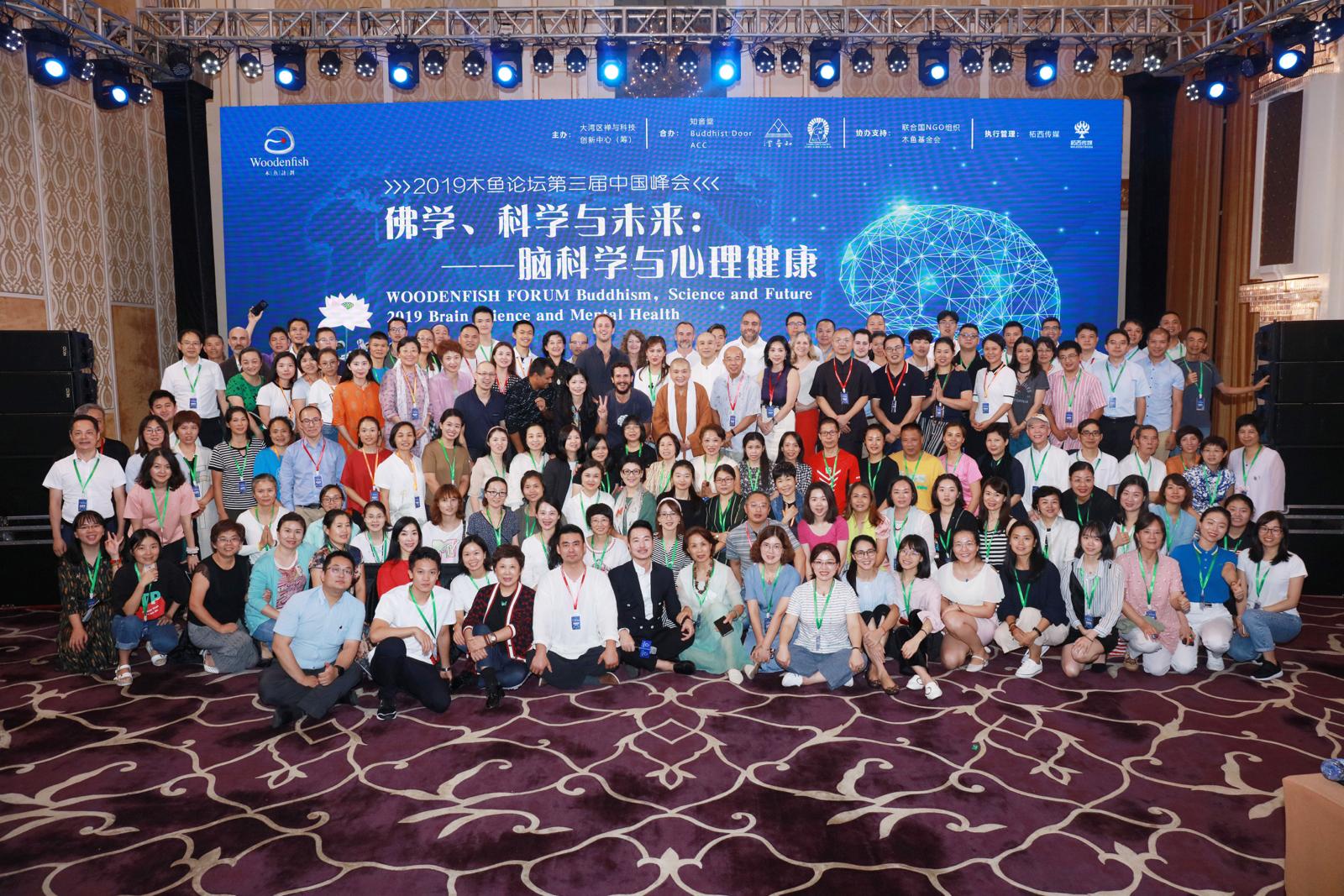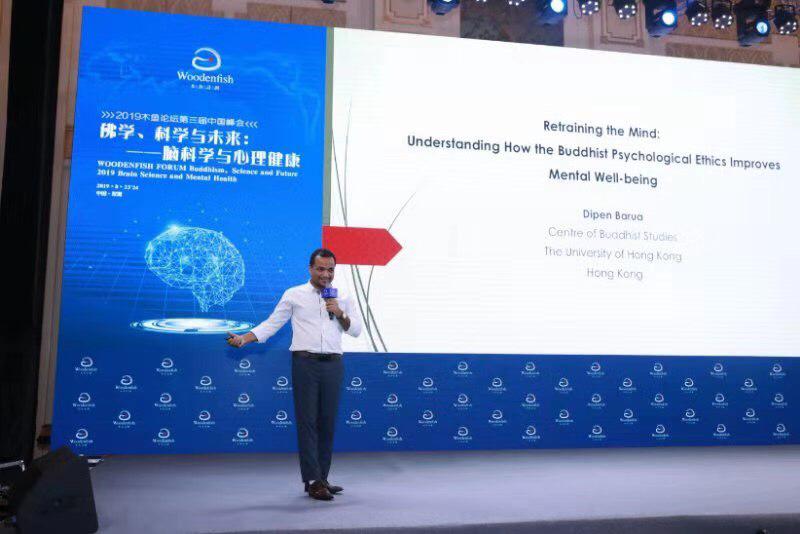On 22 August, I travelled with my wife from Hong Kong to Shenzhen in Mainland China to present a paper at a conference titled, Buddhism, Science, and Future: Brain Science and Mental Well-Being. The Woodenfish Foundation, an international Buddhist educational NGO, organized this conference at the Interlaken OCT Hotel Shenzhen from 23–24 August.
Woodenfish was an unfamiliar name to me until Raymond Lam, senior writer of Buddhistdoor Global (who is also a good friend of mine), recommended me to consider presenting a paper at the conference. Upon acting his suggestion, I went through the Foundation’s website and submitted an abstract with a short bio.
The Woodenfish Foundation, previously known as Woodenfish Project, was founded by Venerable Dr. Yifa at Fo Guang Shan in Kaohsiung, Taiwan, in 2002. Over the decades, the Foundation has expanded in Mainland China and the United States. Since 2016, it enjoys Special Consultative Status with the Economic and Social Council of the United Nations.
The Foundation hosts conferences in different countries. Other activities include the Humanistic Buddhist Monastic Life Program, the Buddhism in China Series, Sutra Translation Councils, cultural peace training programs, lay Dharma teacher training programs, and camps for Chinese youth.
I learned a great deal from the conference and was able to explore some important aspects of Buddhism developed through modern technology all over the world. The speakers, including Ven. Yifa and audiences, started with an interesting introduction of each other before the conference.

Ven. Yifa inaugurated the conference and asked all participants to recount our personal interest in Buddhism and Science and present our outlook and strategy on the scientific aspects of Buddhism in the future. She highlighted the distinctive features of Buddhism which has contributed to the rich diversity of human experience. She has also emphasized an outstanding modern approach to the digital technology through which researcher could study Buddhism scientifically and could be able to help for people’s well-being.
The presentations from international researchers from Asia, Europe, and America greatly enriched the presentations. I still recall clearly their varied ideas and views. Among them, Mike Dannheim, an innovator and entrepreneur, spoke about the mindfulness and entrepreneurship to youthful offenders. Dr. Bashar Badran, an expert in invasive and non-invasive neuromodulation techniques, spoke about a neurostimulation that enhanced meditation practice.
Daisy L. Hung, director of the Institute of Cognitive Neuroscience of National Central University, Taiwan, delivered the keynote. Her lecture was so inspiring as it addressed different parts of the brain connected to functioning in school children and reading related cognitive activities. She also discussed the Buddhist aspect of mindfulness practice for school-going children.

I shared a panel with Thomas Amiard, a French therapist, sound engineer and multi-disciplinary artist; Julianna Raye, who is devoted to deepening people’s understanding of research-supported mindfulness practice in the US; and Dr. Junling Gao, research officer in the Electroencephalogram Laboratory in the Centre of Buddhist Studies, The University of Hong Kong (HKU).
My paper was titled “Retraining the Mind: Understanding How the Buddhist Psychological Ethics Improves Mental Well-Being.” It explored several aspects of mind and mental activities. Taking references from the early Buddhist texts, I explained that the mind and mental habits are interrelated and that habits become self-perpetuating process. I discussed the issue of distress and conflict and the unsatisfactoriness associated with daily lives, how worldly people are entangled in unwholesome thoughts along with the entire course of conceptual proliferation of mind, different modes of psychological factor, different level of happiness and the thought, and how various Buddhist principles and practices, with emphasis on the psychological roots, can be applied for self-development.
My presentation seemed well-received by the audience. Professor Rainbow Tin Hung Ho, associate dean of Postgraduate Education in the Faculty of Social Sciences at HKU, praised my presentation. She is currently doing research focusing on understanding the psychophysiological mechanism and effects of psychosocial interventions for improving people’s health and well-being. As we both are from HKU, she approached me and expressed her willingness to study Buddhist scriptures particularly ancient languages like Pali and Sanskrit.
I was surprised when the last session was shared by a group of youth from different parts of Mainland China and abroad. They expressed their own experience of using technology mindfully with their studies. They emphasized their Buddhist practices, like mindfulness meditation, into their daily lives.
I felt that they are not addicted with modern technology: rather, they use it for their own well-being and engage in an environment of daily movement with Buddhist practices that lead them to self-evaluation and improvement. Many local people, comprising both monastic and lay followers, will mature after the conference to effectively spread Buddhist teachings through technology. And, speakers will, through their modern innovations with applying Buddhist practices and thoughts, enhance not just Buddhism but nurture the deep and sound growth of different aspects of Buddhism by using modern technology.

